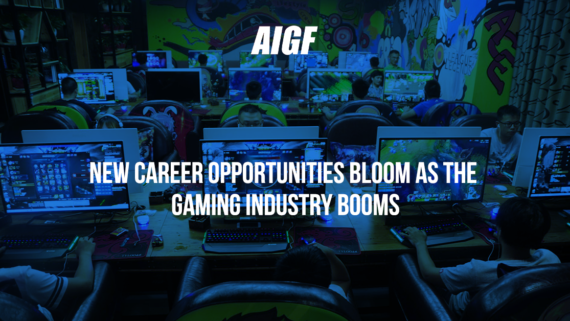The rise of the gaming industry in 2020 has forced each sector to explore the gaming industry with new connections like investment, sponsors, and more. In the present digital way of life, the roads for looking for diversion and entertainment have expanded complex.
‘Online Gaming In India – The GST Conundrum’ Report Provides Clarity On The Valuation & Applicable GST Rates For The Gaming Industry
The rise of the gaming industry in 2020 has forced each sector to explore the gaming industry with new connections like investment, sponsors, and more. In the present digital way of life, the roads for looking for diversion and entertainment have expanded complex.
Resultantly, online gaming has arisen as a significant road because of a huge number of positive factors, for example, youth and technically knowledgeable populace, affordable smartphone, better internet connection, expanded mindfulness, and development of local gaming content fit to one’s inclinations. The Indian online gaming sector came to $1.027 billion in 2020, a development of roughly 17.3 percent from $543 million in 2016. With its present direction, it is required to reach $2 billion by 2023 as far as rake fees acquired, according to the EY-All India Gaming Federation (AIGF) report ‘Online gaming in India – The GST conundrum.’
EY India partner – indirect tax Bipin Sapra said, “The online gaming industry is developing at a great CAGR of more than 20% and holds huge potential for financial development, work creation and commitment to the Government’s vision of a trillion-dollar digital economy by 2025.
To empower the industry in understanding its pinnacle development potential, it is basic that the GST system for the online gaming industry is kept sane and at rational with other technology stages. Embracing around the world reliable norms in our tax treatment of industry will empower it to accomplish its actual potential.”
All India Gaming Federation CEO Roland Landers said, “The valuation disputes under GST law have been a dampener to the industry. Considering the market size and future development projections, the online gaming industry is required to be a huge supporter of the government’s vision and give future financial roads considering the universal digital patterns affecting our way of life.
It is important to highlight that regressive tax assessment from these arising areas may just make the business impractical in India. We propose that the Tax authorities ought adjust their strategies to universally acknowledged standards of burdening the online gaming area and give sureness to the industry. We trust that this report would give significant bits of knowledge and assist with agreeing on center to this dawn industry.”
Here are the key findings:
● The worldwide market size for online games is required to develop from $37.65 billion in 2019 to $122.05 billion by 2025. This means a CAGR of 18% (approx.).
● The industry is the fourth biggest sub-area in Media and Entertainment in 2020 with a CAGR of 27%.
● Online gamers are assessed to grow from 360 million (2020) to 510 million (2022). Of these, an expected 85 percent are mobile gamers.
● Online real cash game players are anticipated to develop from 80 million in 2020 to 150 million by 2023.
● The nation has more than 400 gaming new companies in India.
● Favorable demographics – millions of youthful consumers with expanding levels of disposable income – are making customer commitment the biggest income stream. By making more than 11,000 jobs, the esports portion is anticipated to create around Rs 100 billion of monetary incentive for India somewhere in the range of 2021 and 2025, containing ventures, in-application buys, rewards.
● The development possibilities of the industry have been filled by gaming stages Dream11, MPL, Baazi Group, Rummy Culture, Paytm First Games, Zupee, Adda52, Sugal and Damani Group, Spartan. Casual gaming stages and developers incorporate – Ludo King, Ludo Supreme, 99games, Moonfrog Labs. Esports distributers incorporate – Krafton, Electronic Arts, Nintendo, Epic Games, Nazara. Esports stages incorporate MPL esports, Nodwin, PayTM First Games.
● GST pace of 18% to be required to relieve any dangers of misclassification of the online gaming industry as gambling or betting. The expense rate ought not to surpass 20% as it could bring about the gaming administrators just as consumers entering the dark market.
According to the report, the game of chance draws in a higher GST pace of duty opposite a game of skill. Online games work either on the ‘rake fee’ model wherein the gaming stage charges a rake fee for working with games or ‘freemium’ models wherein the gameplay is free yet extra highlights might expect clients to buy specific things at a money related cost. , a rational imposition of Goods and Services Tax (‘GST’) is essential for supporting this industry.
The report likewise carried out the whole grouping of gaming, esports, fantasy sports, and real money gaming, etc to stay away from disarray between the classification. To understand the maximum capacity of the online gaming industry, a levy of standard GST/VAT rate is suggested, to be treated comparably to some other fragments of the economy.
Considering the market size and future development projections, the online gaming industry is relied upon to be a huge supporter of the economy. It might assist with accomplishing the vision of a Trillion-Dollar digital economy by the government of India and give future monetary roads considering the pervasive advanced patterns affecting our way of life. Given the potential and the monetary commitment, iron out the ambiguities and give a steady tax regime when the business is beginning and simply going to develop from here. With this view, the approach proposals have been given thus.
Crystallizing the GST levy mechanism
The valuation mechanism in collecting GST on the whole stake esteem versus the rake fee component should be laid out clearly to avoid any ambiguities and potential litigation leading to tax demands. Any vulnerability and potential outcomes of litigation adversely impact the strategies, activities, and passage of new players in the industry. Most industry players have a rake fee in the scope of 4% to 20%. Any endeavor to levy GST on the whole stake esteem conceivably prompts financial Inviability of the business model and could drive the conclusion of organizations.
The report outlines three options:
● GST on rake fee value: This proposes a levy of GST just on the rake fee for example thought got by the gaming stage. It is as of now being followed across the industry and is in arrangement with the existing GST system to impose a charge on thought as it were.
● Deemed credit model: This has just two information measurements to be thought of – stake and pay-outs. This system makes it simpler for the Government to check and review elements. In any case, organizations would be needed to attempt an adjustment of their ERP frameworks to figure GST.
● GST on whole stake value however at a nominal rate of say 1.8 percent: This is less difficult to compute as it has just a single information metric to be followed by the business for example stake value. Be that as it may, the system would be unfair for industry players having low rake since GST surge would be high while edges are lower. This strategy is likewise inclined to control where ‘platform fee only’ players with no prize-winning model might offer nominal rewards to bring down tax outflow.
While India is as of now the fourth biggest online gaming market around the world, the industry requires a strong administrative and lawful climate to help the business scale rapidly and accomplish its actual potential. Hence, the EY with All India Gaming Federation (AIGF), dispatched this report – ‘Online gaming in India – The GST conundrum,’ to give clarity on the valuation of appropriate GST.
Credits: Animation Express











Comments
Comments are closed.